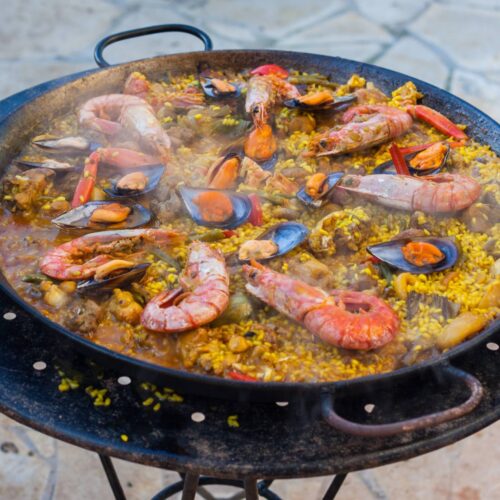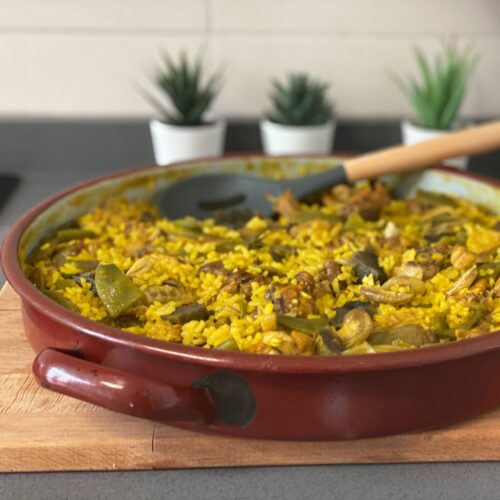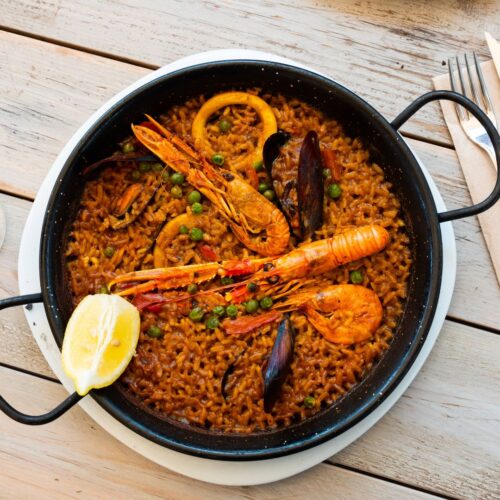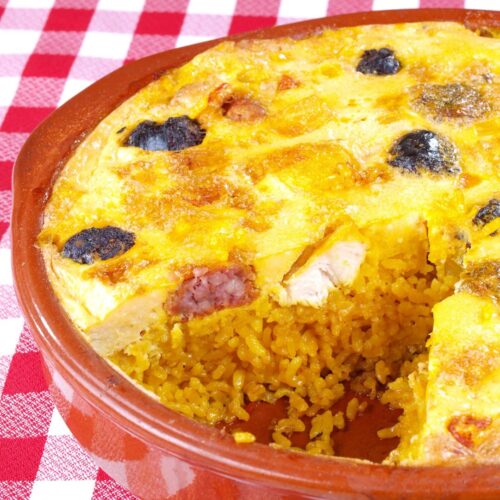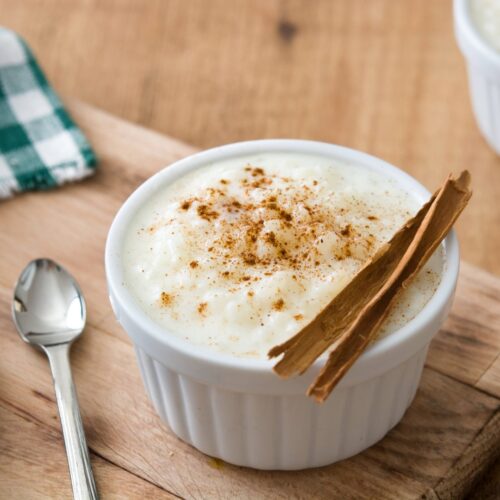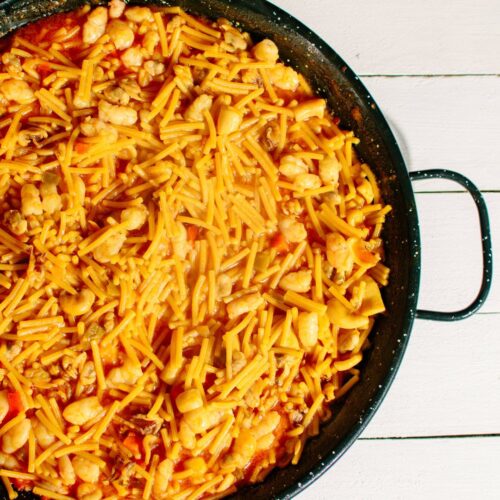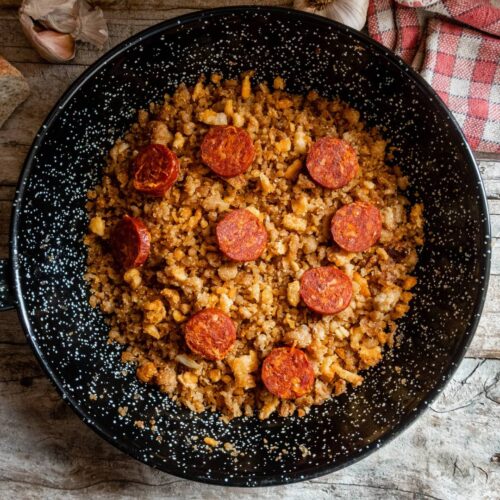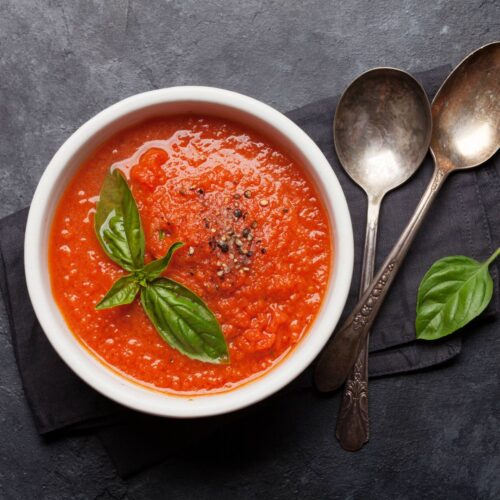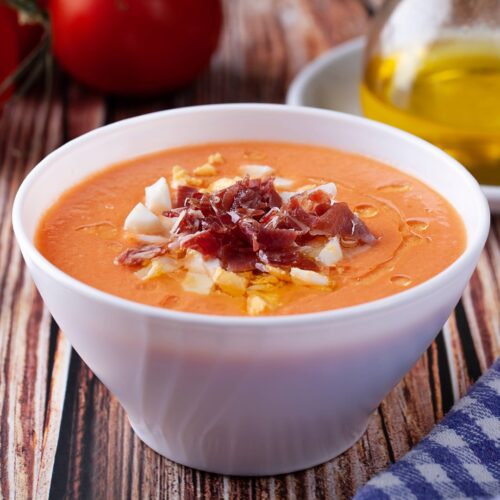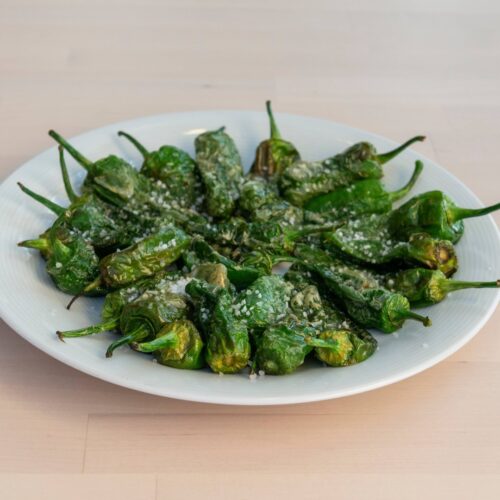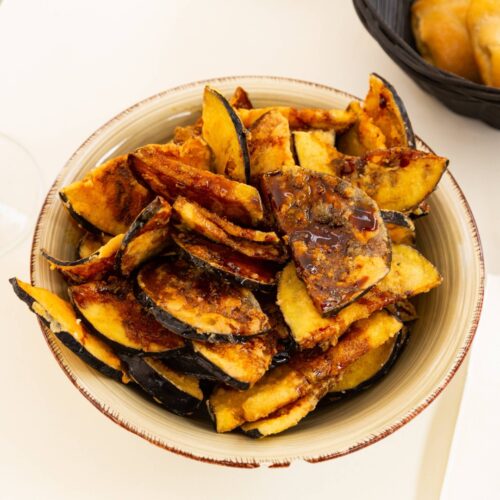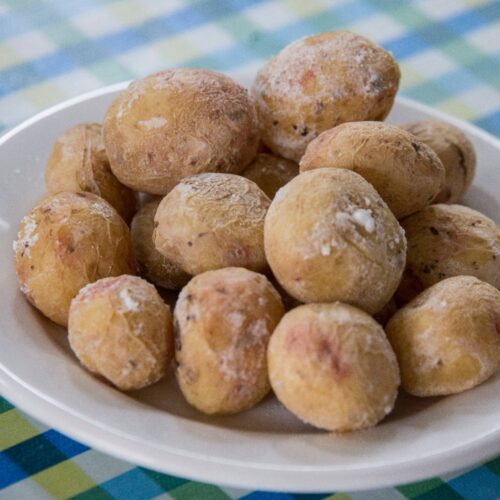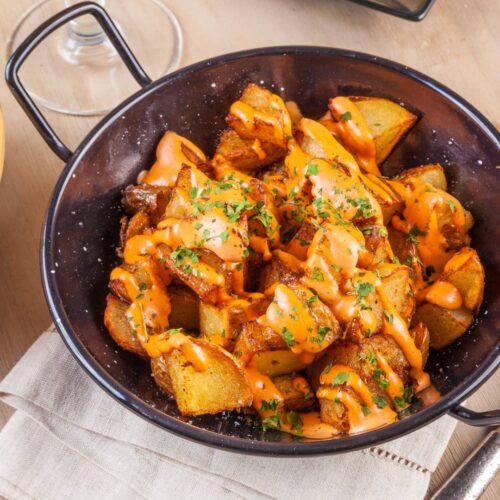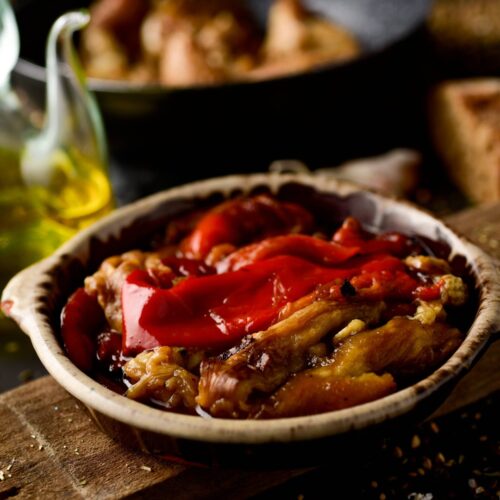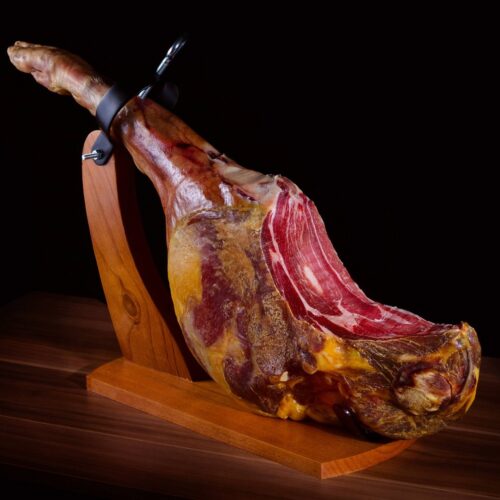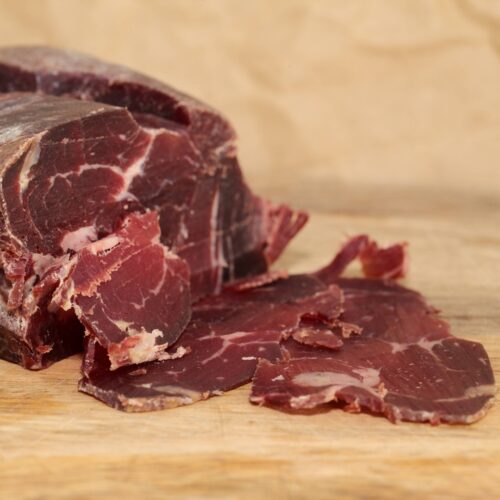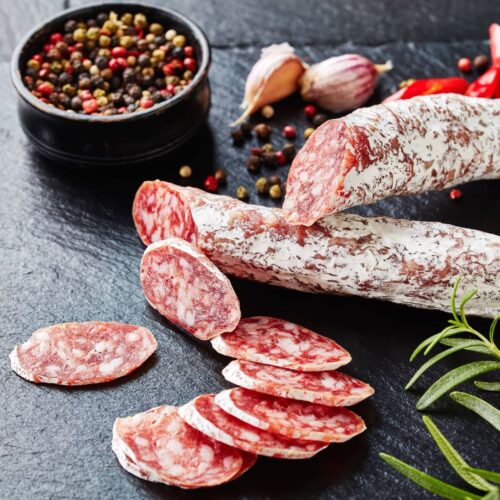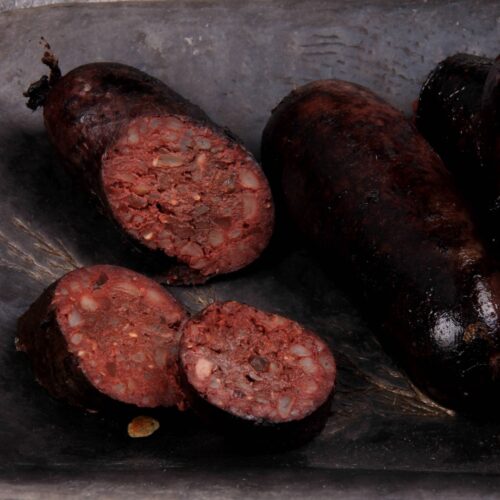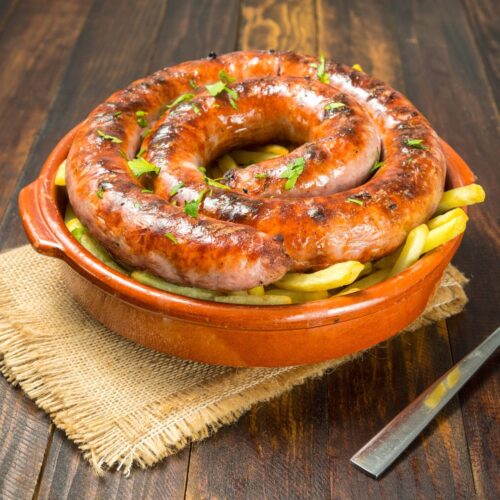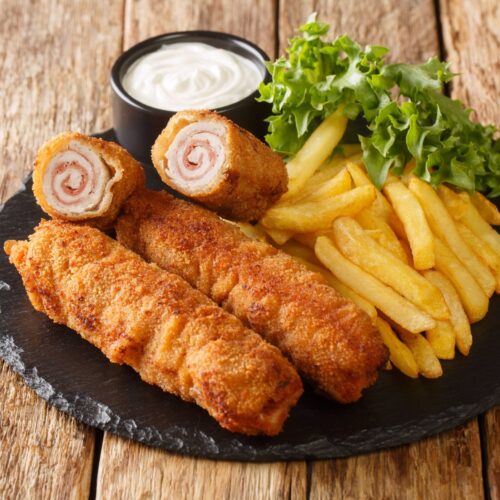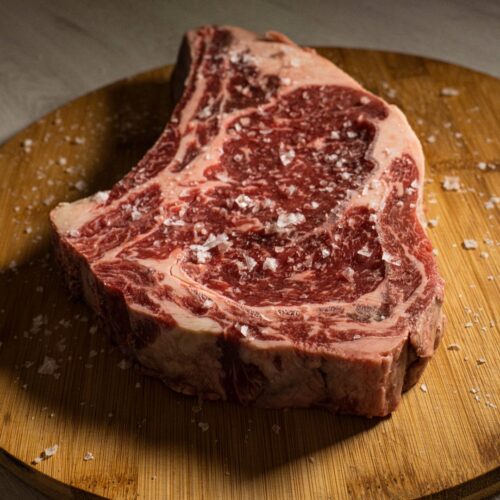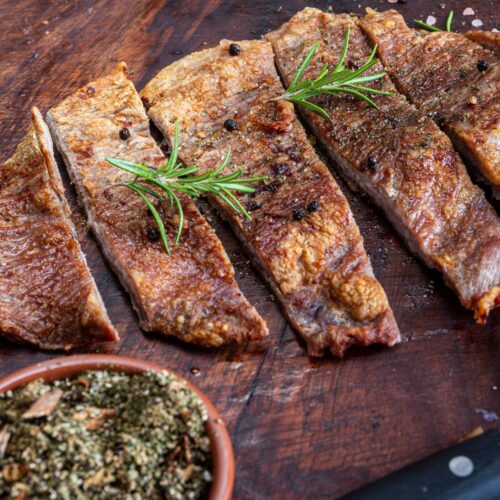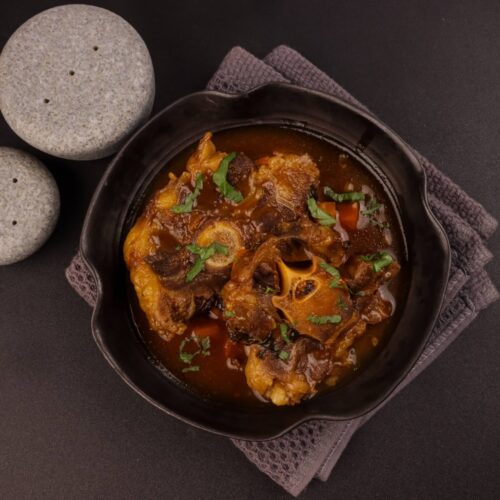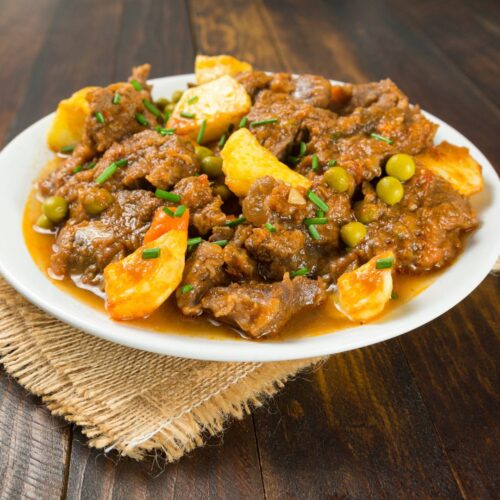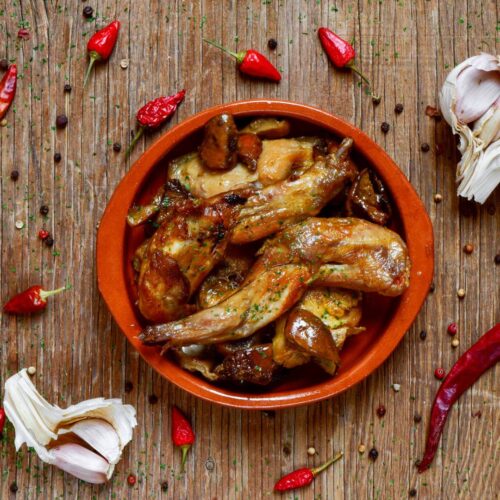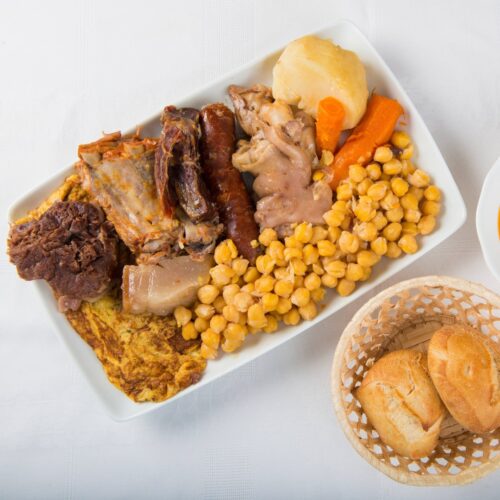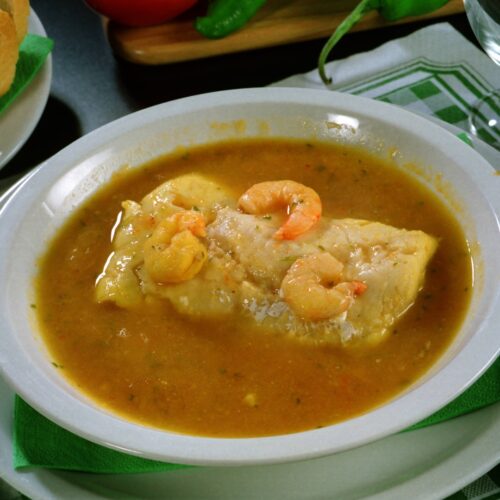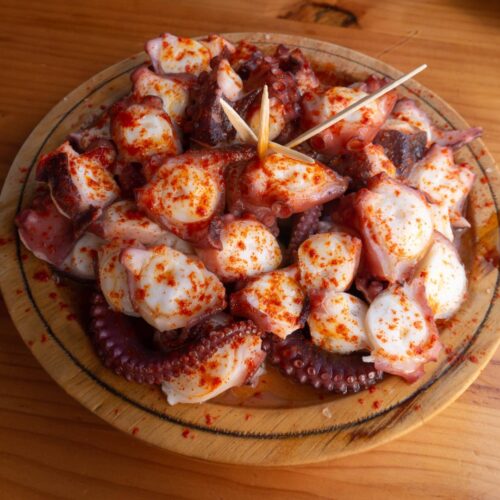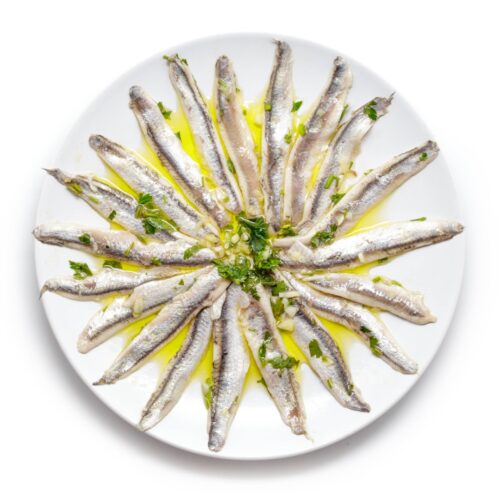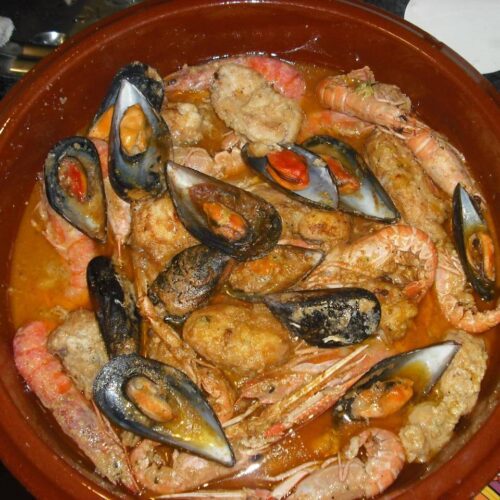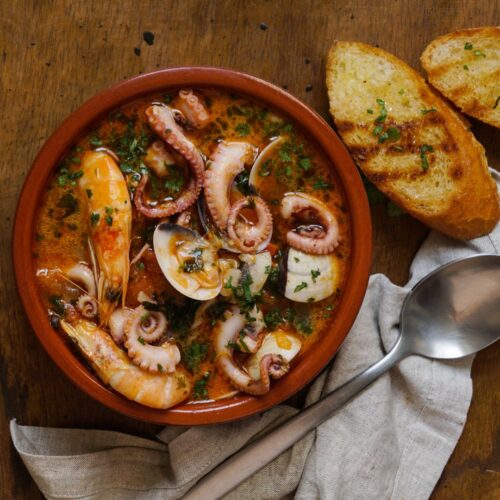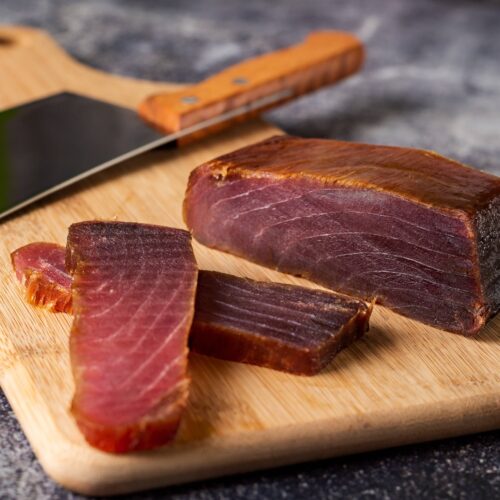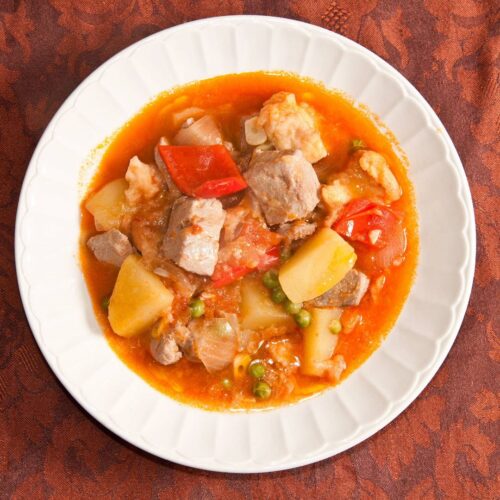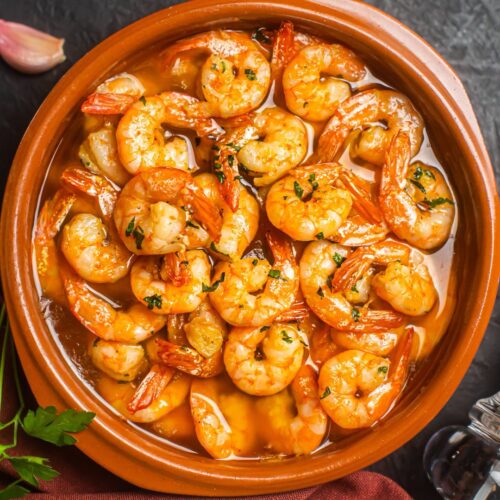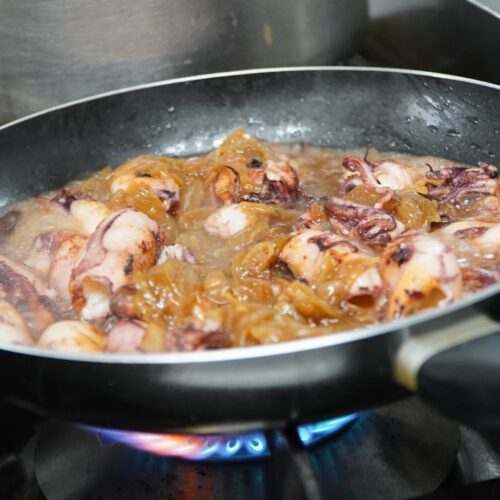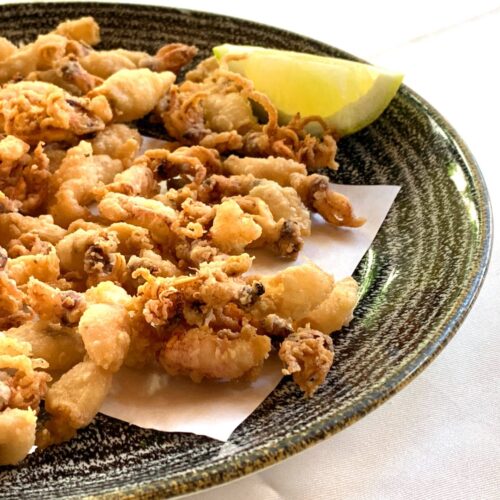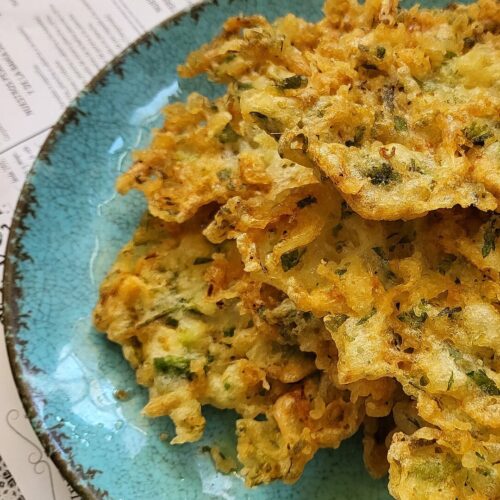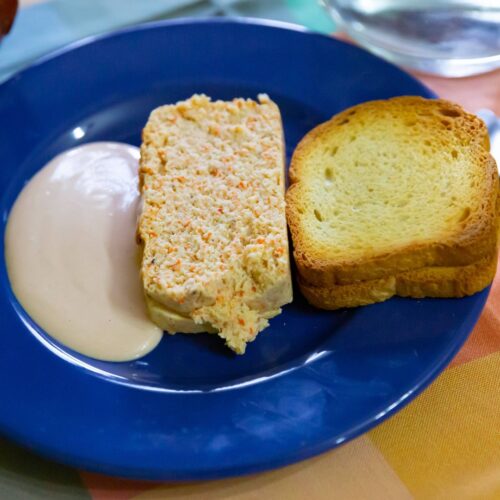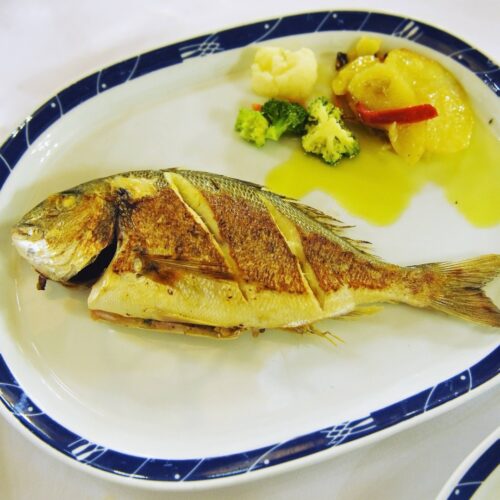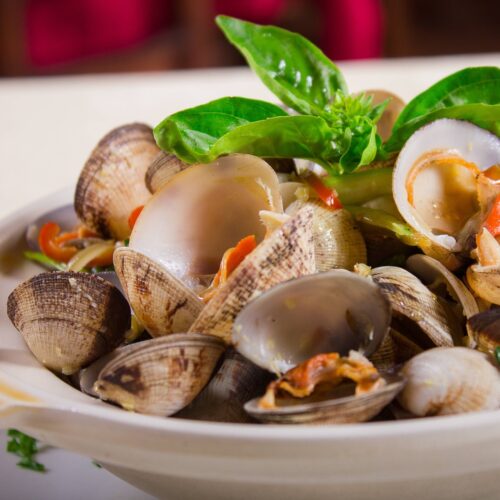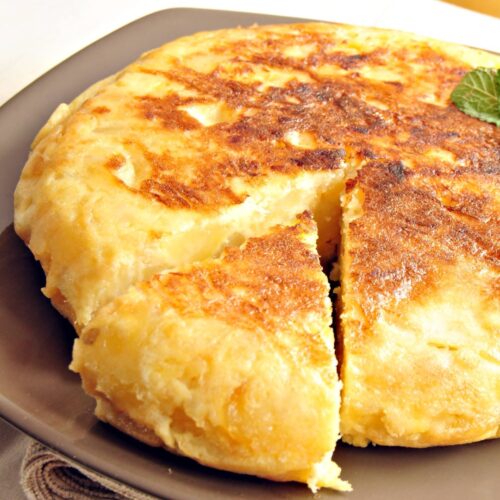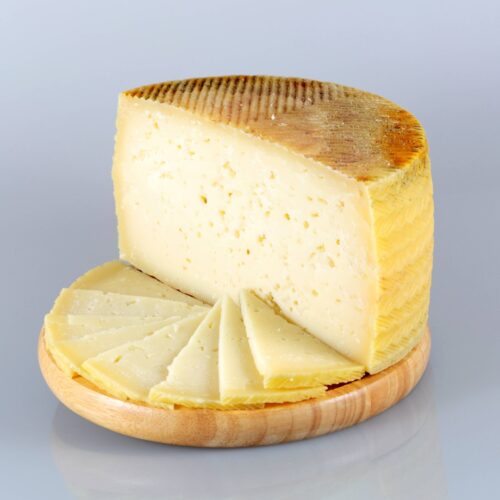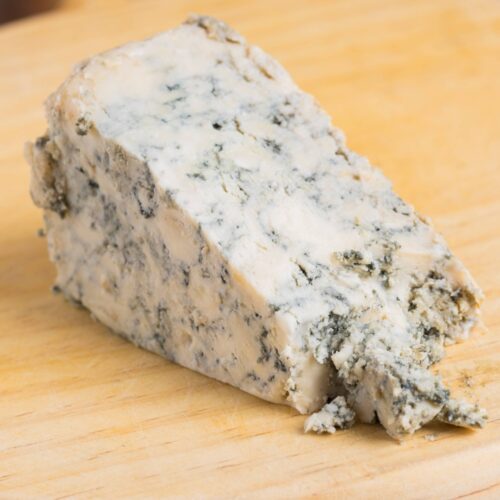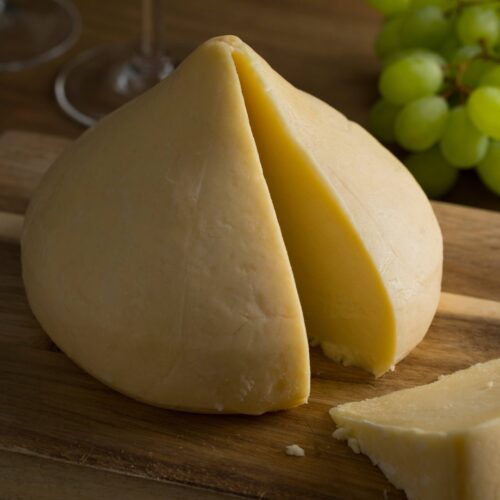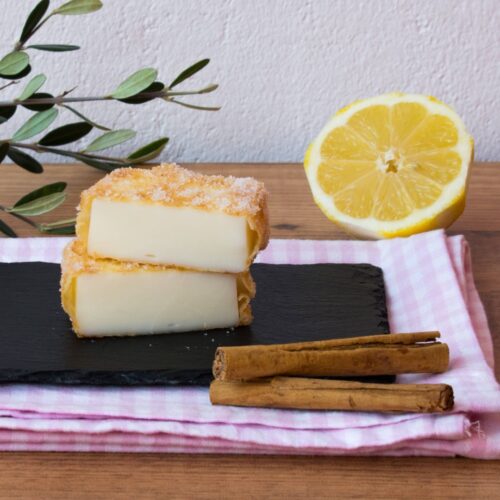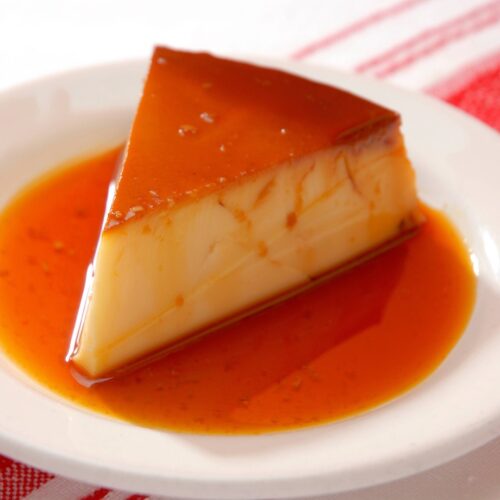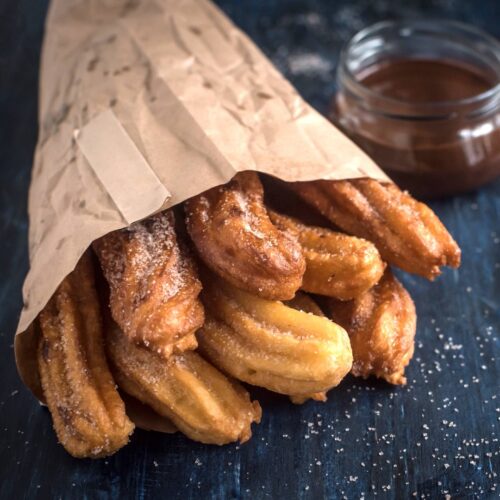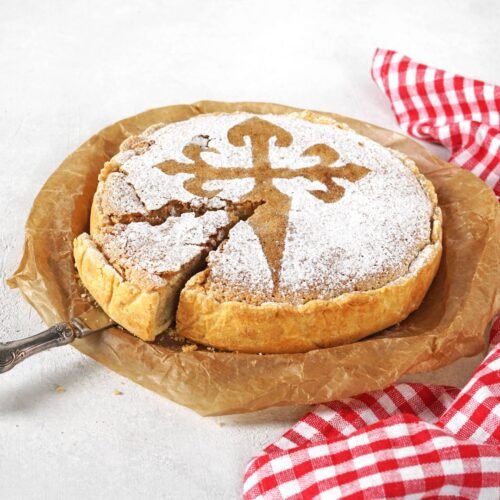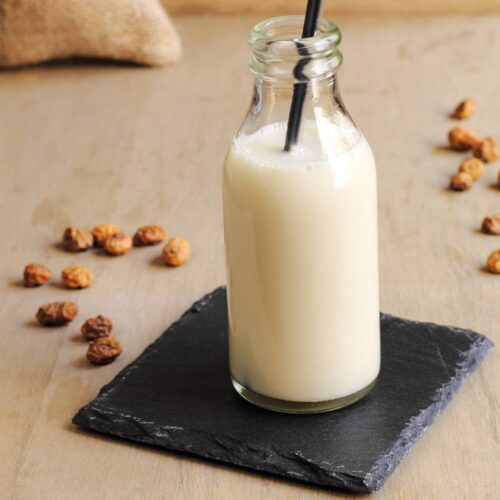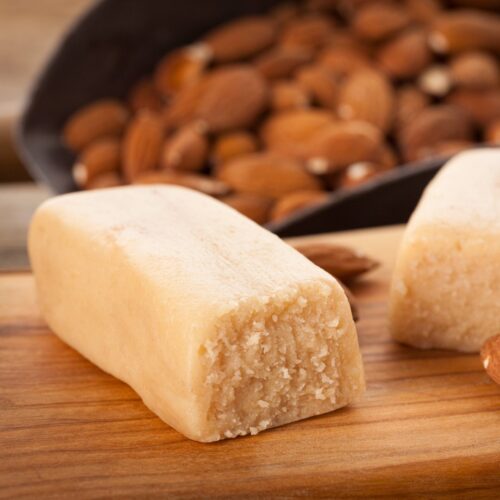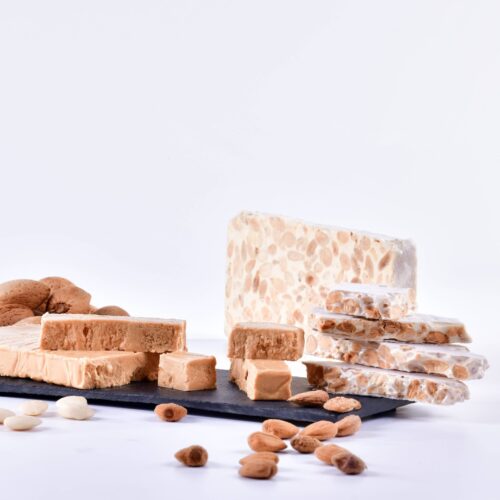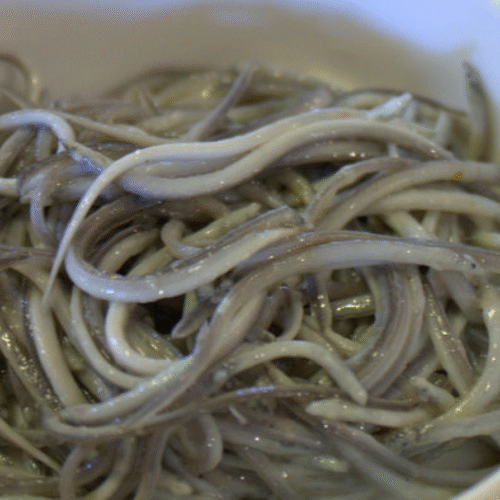THE ESSENCE OF SPANISH CUISINE
Spanish people love their food, eat generous portions, and prepare it simply, using only a few fresh ingredients that don’t hide behind excessive seasoning or elaborate presentation. In Spain, culinary wisdom means knowing when to stop rather than what to add. Menus often include the trinity of Spanish proteins: jamón ibérico, salted cod, and fresh seafood. Bread, manchego cheese, quality beef, golden olive oil, ripe tomatoes, and wine are foundational.
GRAINS IN SPANISH CUISINE
Wheat has been a cornerstone grain for centuries. Wheat breads prevail, though in many forms and recipes, depending on the region. Some of the most popular are:
– pan de barra – baguette-style bread with a crispy crust and soft interior, used for making bocadillos
– pan de payes – thick rustic crust, and dense, chewy crumb, used for toasting and served with tomato and olive oil
– pan de molde – sandwich bread, soft and sliced
– molletes – small round rolls
– rosquilletas – thin, crispy breadsticks
Beyond bread, wheat in Spanish cuisine features sweat and savory pastries, like churros, empanadas, empanadillas, ensaimadas. Spanish cooks use wheat flour for the light coating on fried fish and seafood and turn stale bread into breadcrumbs for crispy croquettes. While Spaniards don’t eat pasta like their Italian neighbors, they do have fideuà, which is basically paella made with noodles instead of rice, and sopa de fideos, a homey, comforting noodle.
Only a few countries in Europe treat rice as an essential staple, as Spain and Portugal do. Both Iberian Peninsula neighbors are top consumers of rice in Europe. This popularity mostly has to do with the Moors, who, back in the 8th century, popularized rice in Spain. Plain rice is not a frequent Spanish choice; they’re more often found in dishes like paella, arroz negro, arroz con costra, and creamy rice desserts. Mostly, short-grain rice is preferred for its ability to absorb flavors while retaining a distinct bite.
Interestingly, despite their similar culinary traditions, corn is much less popular in Portugal, despite their otherwise similar culinary. While Spain also had colonies in the corn-rich Americas, Spanish cooking customs were already well-established when corn arrived, and the new grain had to compete with existing staples. Corn simply never gained the widespread acceptance that wheat and rice already possessed.
PRODUCE IN SPANISH CUISINE
The humble potato is loved in Spain: tortilla española – potato omelet, patatas bravas tossed in spicy sauce, or the wrinkled Canarian papas arrugadas with mojo sauce. Spain ranks as one of Europe’s top potato producers and consumers, with each region developing distinctive potato specialties.
One of the star vegetables in Spanish cooking is tomato, mostly harvested in southern Andalusia. Tomatoes show up everywhere – in cold gazpacho and salmorejo soups and as the heart of sofrito – the base of slowly cooked tomatoes, onions, and garlic that starts nearly every Spanish stew and paella.
Peppers enhance dishes with colors, like in smoky escalivada – smoky grilled veggies; add depth to rice and meat preparations; season in the form of smoked powder, or are served alone, like grilled pimientos del padrón. Mild, green pepper guindillas, crunchy and marinated with wine vinegar, are popular as a part of small snack pintxos – various ingredients served on a toothpick.
Artichokes are a big deal in Valencia, where locals go crazy for them – you’ll find them grilled over flames or stewed with chunks of ham until tender. Down south, eggplant rules, thanks to the Moors who brought them centuries ago. Try berenjenas con miel – crispy fried eggplant drizzled with honey.
Zucchini and asparagus show up everywhere since they love the Spanish climate. As for legumes, they’re the backbone of comfort food. Chickpeas are a clear favorite, but you’ll also find white beans, pintos, and favas often hanging out with ham and other cured meats in rustic stews.
MEAT IN SPANISH CUISINE
No meat is as popular in Spain as pork is. It has to do with the overall pork popularity in Europe and the dry-curing, the Spanish form of art. world’s finest jamón ibérico and its counterpart, jamón serrano, are eaten both daily and are served as a special treat for celebrations. Dedicated ham shops jamonerías and the sight of hanging hams in bars are a part of Spanish culture.
Sideways to hams go sausages – the spicy red chorizo, with its smoky taste from paprika, the air-dried lomo, and milder salchichón are popular tapas, often served in thin slices.
Fresh pork is also appreciated from nose to toe. Signature dishes are wine-braised cheeks, a cochinillo sado roasted suckling pig from Segovia, and secreto ibérico, a hidden cut of marbled pork.
Spain has a long tradition of sheep herding, especially with breeds churra and manchega, raised for both meat and cheese. Meat is usually prepared rustic style: chuletas de cordero a la brasa – grilled lamb chops, cordero asado – grilled lamb over an open fire, lechazo – suckling lamb roasted in a wood-fired oven.
Beef also has a tradition in Spain, though it is less central than pork or lamb. Raising and consuming oxen in Spain dates back centuries – their strength was used for plowing fields or transporting goods, and meat consumed after in dishes like carrillade de buye – ox cheek stew, ternera gallega – Galician beef, rabo de toro– slow-cooked ox tail in tomato and wine sauce. Some beef in Spain is also dry-cured, like cecinea de leon.
Speaking of the game, rabbits are pretty popular. You’ll find it in garlicky conejo al ajillo and in authentic paella Valenciana, where rabbit (not seafood) is actually a traditional ingredient.
FISH AND SEAFOOD IN SPANISH CUISINE
Fish and seafood in Spain are consumed in huge quantities, especially in coastal Galicia, Andalusia, and Catalonia. You’ll find everything from octopus, clams, and shrimp to bacalao salt cod, sea bream, sea bass, and sardines. Spain’s affinity for cephalopods is unique – cuisine features octopus, squid, and cuttlefish prepared in dozens of ways, unlike many other European cuisines.
Even inland, seafood is major: paella de marisco – seafood paella, zarzuela de mariscos – seafood stew, pulpo a la gallega – octopus with smoked paprika, bacalao al pil pil – salted cod with olive oil, boquerones en vinagre – vinegary anchovies, and gambas al ajillo – garlic shrimp, are iconic Spanish dishes. Fish markets are bustling with variety, and Spaniards have great respect for the quality and freshness of their catch.
DAIRY IN SPANISH CUISINE
Dairy farming and shepherding have historically been more prevalent in Galicia, Asturias, and the Basque Country. Spain has a long tradition of cheesemaking, so it is challenging to pinpoint the exact number of varieties. It is estimated that around 150-200 cheese types are Spanish, and 26 are classified as Protected Designations of Origin.
One of the most famous is manchego, made from sheep’s milk. Its rind has a unique crisscross pattern created using wooden molds. Manchego comes in various aging stages, from young and mild to aged and sharp.
Spain produces Europe’s priciest cheese: cabrales, aged in specific caves. At auction, they can fetch over €15,000 per wheel, setting world records for cheese prices.
Spain also has some truly unusual cheeses, such as torta del casar. This cheese is intentionally made using an enzyme from thistle flowers instead of animal rennet, which gives it a bitter taste and an extremely runny texture. It’s eaten by cutting off the top and scooping out the interior.
NUTS, OILS, AND SWEETS IN SPANISH CUISINE
Olive oil is so essential in Spain that its consumption is nearly three times the Mediterranean average. Spain is the world’s largest producer of olive oil, responsible for about 44% of global production. It is also the second-largest consumer worldwide, with an annual consumption of 10 liters per person, trailing only Greece. According to the World Best Olive Oils rankings, Spanish extra virgin olive oils hold the top positions and garner the most awards and recognition globally (source).
Spanish desserts tend toward simplicity compared to the elaborate pastries of France or the richness of American desserts. They are often made of a few high-quality ingredients with minimal processing.
Almond dominance distinguishes local desserts on a global scale. Spain is the second-largest consumer of almonds, incorporating them into turrón —almond nougat—marzipan from Toledo, countless cakes, and cookies. There is even an almond-based soup called ajo blanco, in which almonds are combined with garlic, bread, and vinegar to create an elegant soup (or sauce).
Other nuts, such as pines, hazelnuts, and walnuts, are used in cakes, pastries, marzipans, cold soups, and drinks, like horchata de chufa.
The Mediterranean trifecta of honey, citrus, and olive oil frequently appears in Spanish desserts. Honey often replaces refined sugar, and the use of olive oil in desserts predates butter-based pastries in Spanish cuisine.
